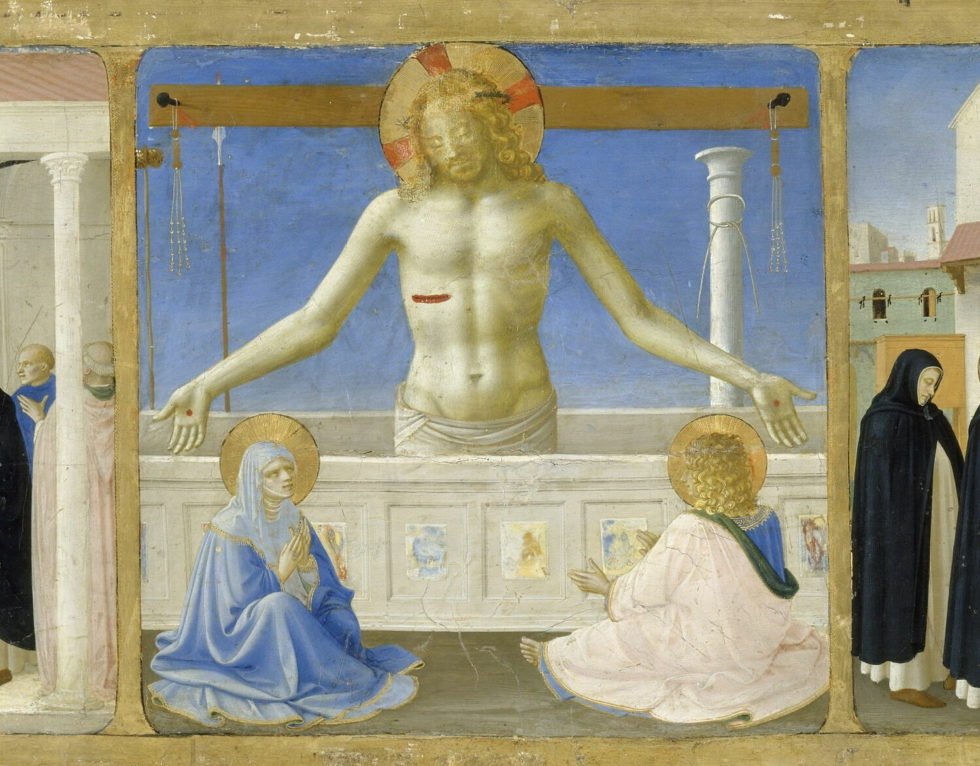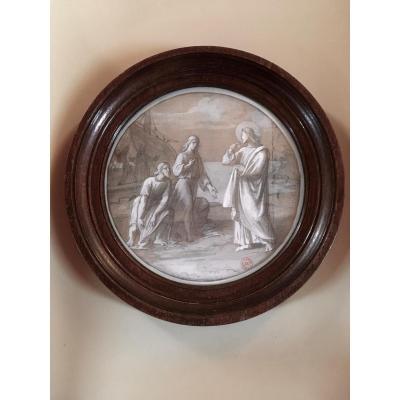Early draftsman, son of a goldsmith and brother of the priest Paul-François Gaspard, Jean-Louis Lacuria entered at the age of 15 years at the Beaux-Arts in Lyon under the teaching of the troubadour painter Pierre Révoil. It was with Jean-Auguste Dominique Ingres that he continued his artistic training in Paris where he settled in the fall of 1830 in the company of Hippolyte Flandrin. Aged 20, they both aspire to find in the master the spiritual echo by which they are animated. If material life proves difficult, their artistic ideals compensate for the difficulties. In October 1831, Jean-Louis Lacuria was admitted to the École des Beaux-Arts in Paris. Competing for the Prix de Rome, Hippolyte Flandrin served as a model for his character of Theseus, which he did not obtain, unlike the latter. The painful departure of his friend for the eternal city contributes to the exchange of a beautiful correspondence between 1832 and 1843. Thanks to Napoleon's Italian military conquests exhibited at the Louvre, Lacuria can observe at leisure the Florentine and Sienese Primitives directly on the ground French.
Ill. 1. Fra Angelico (Florence around 1400 – Rome, 1455), The Coronation of the Virgin, 1425, tempera on poplar wood, 2.09 mx 2.06 m, Louvre Museum, Paris, Inv. 314. Ill. 2. Detail of the predella, 4th scene, Christ insulting the Tomb, surrounded by the Virgin and Saint John.
Our sheet, taken from one of his sketchbooks, testifies to his interest in the master of the Quattrocento: the artist studies here with a fine and precise line a Virgin in pain figured on the predella of the Coronation of the Virgin by Fra Angelico (IVN. 314). The years 1835-1845 constituted a golden decade for French religious painting and contributed to the tremendous decorative revival of many Parisian churches, in which the talent of the best artists of the time flourished and flourished. Lacuria worked, for his part, in the workshop of Alphonse Périn and Victor Orsel, of whom he was the practitioner at Notre-Dame-de-Lorette.
































 Le Magazine de PROANTIC
Le Magazine de PROANTIC TRÉSORS Magazine
TRÉSORS Magazine Rivista Artiquariato
Rivista Artiquariato